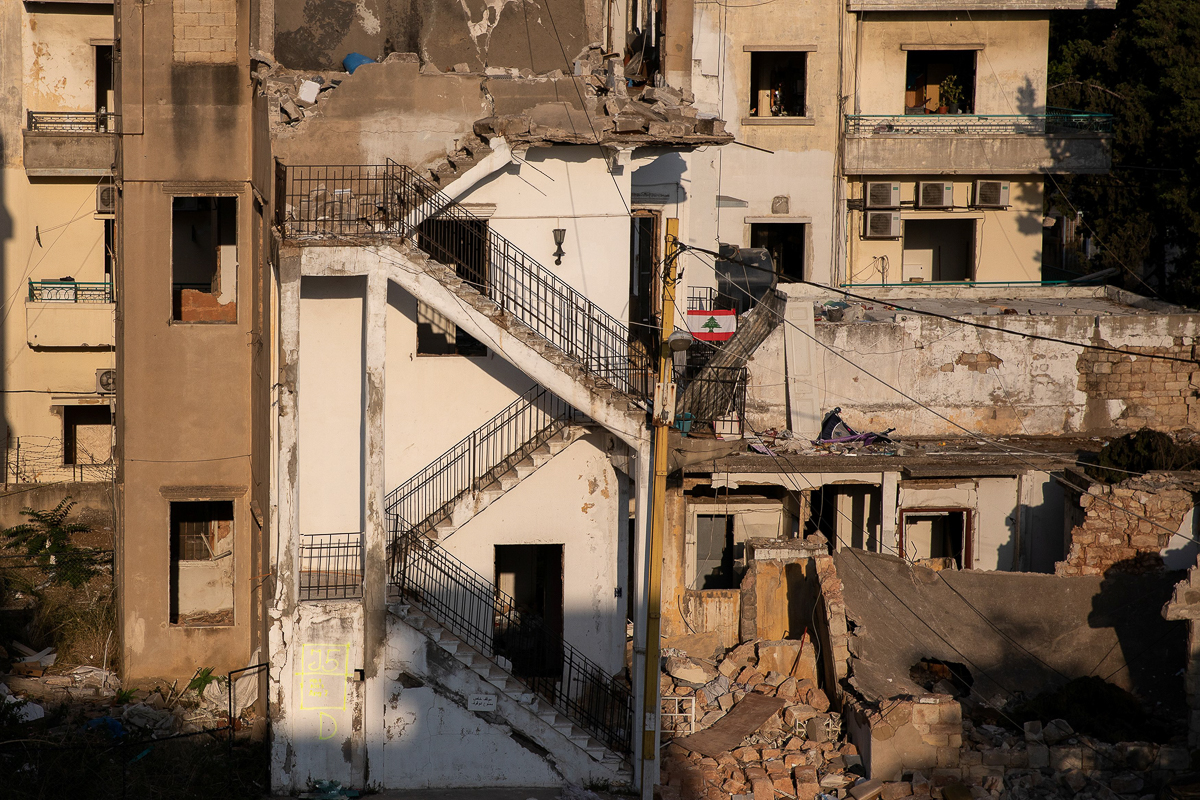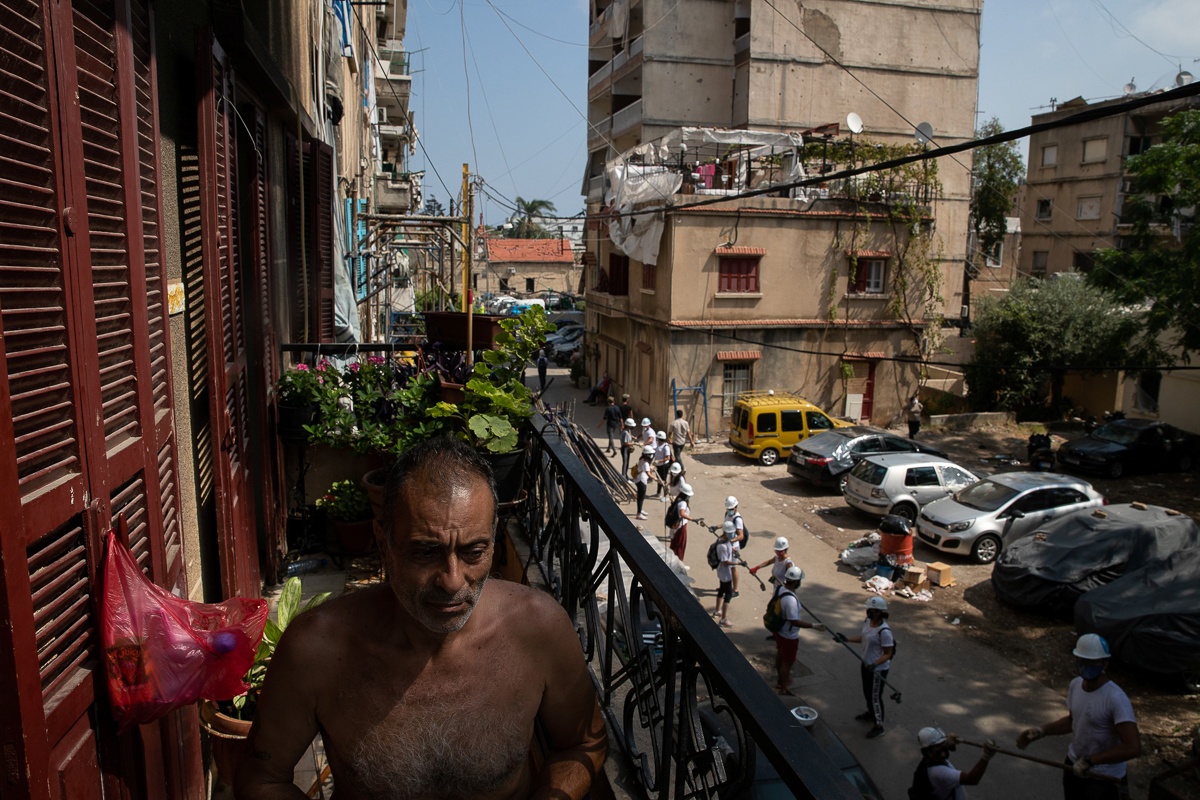
Photos: Grieving Lebanese neighbourhood struggles to rebuild after explosion
Claudette Halabi cried out from beneath the rubble of her house in Beirut for an hour before she died.
Her neighbours could not save her.
“We kept hearing the screams. I heard her voice. But we couldn’t do anything. It still hurts,” said Johnny Khawand, near the remains of the three-storey building she lived in, now crushed by the force of the blast at the port earlier this month.
Four people died in that building alone, among them Claudette, a widow in her 70s he had known since he was a child.
Khawand, born 40 years ago in this neighbourhood, worked with the rescuers through the night after the blast.
In Karantina, one of Beirut’s poorest neighbourhoods near the port, people are still reeling from the explosion that flattened homes and killed many in a neighbourhood where everyone felt like family.
A week later, the neighbours are struggling to find the money to rebuild, without help from the state in a city that was already deep in economic collapse.
The port warehouse explosion killed at least 172 people, wounded thousands and ravaged entire districts.
It shattered walls and ripped out balconies in Karantina, a neglected part of the capital.
The cluster of streets – which house, among other things, a slaughterhouse and a waste plant – saw one of the bloodiest massacres of Lebanon’s 1975-1990 civil war.
Many said the blast did more damage in a few seconds than 15 years of war. With wreckage at their doorstep once more, families who have spent decades in Karantina have camped out in their apartments.
They sleep on the floor or on ripped couches, without doors or windows, not sure how to go on.
“I’m in a nightmare I can’t wake up from. I still can’t believe I’m looking at my mother’s coffin,” said Claudette’s son, George Halabi, who flew in for her funeral.

![Attendees at Halabi's burial. "We kept hearing the screams. I heard her voice. But we couldn't do anything. It still hurts," said neighbour Johnny Khawand. [Alkis Konstantinidis/Reuters]](https://www.aljazeera.com/mritems/Images/2020/8/16/ce28e019eaa542f8ba4c5bc141cecba2_8.jpg)
![Mourners gather around the coffin of Claudette Halabi, who was killed by the explosion at the Beirut port. Her neighbours said Claudette cried out from beneath the rubble of her house for an hour before she died. [Alkis Konstantinidis/Reuters]](https://www.aljazeera.com/mritems/Images/2020/8/16/158a6d0af4fb458bae0aa32a73797751_8.jpg)
![The remains of a house damaged by the explosion in the Karantina neighbourhood of Beirut. [Alkis Konstantinidis/Reuters]](https://www.aljazeera.com/mritems/Images/2020/8/16/aa7a20dd7bc04a9389444f57162957e1_8.jpg)
![Johnny Khawand, 40, stands in what remains of his kitchen. Khawand worked with the rescuers through the night after the blast. [Alkis Konstantinidis/Reuters]](https://www.aljazeera.com/mritems/Images/2020/8/16/5dd5f3a6bcd94e68949d19048366dba4_8.jpg)
![A boy whose home was damaged by the explosion sleeps outdoors on a mattress on the ground in Karantina. [Alkis Konstantinidis/Reuters]](https://www.aljazeera.com/mritems/Images/2020/8/16/0f87eaf2de3841288cce93c0afef8101_8.jpg)



![Marguerite Dirany, 81, sits in the living room of her damaged home. [Alkis Konstantinidis/Reuters]](https://www.aljazeera.com/mritems/Images/2020/8/16/548e274b1738437287166de126b1f620_8.jpg)


